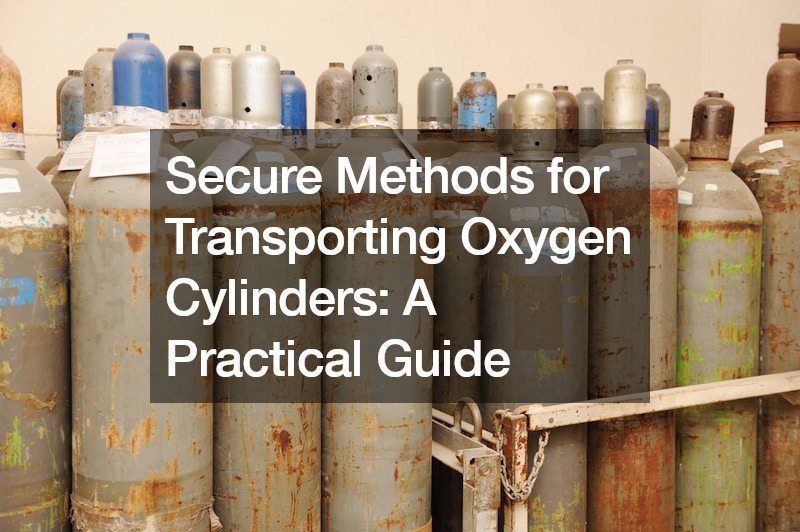Oxygen cylinders are lifesavers in medical facilities, industrial settings, and even during recreational activities like scuba diving. But these pressurized tanks require proper handling and transportation to ensure safety. A mishap can cause serious injuries or property damage. Here’s a practical guide on secure methods for transporting oxygen cylinders in the United States.
Understanding Regulations and Standards
Several regulations and standards govern the transport of compressed gas cylinders, including oxygen. Here’s a breakdown of the key ones:
The Department of Transportation (DOT): The main regulatory body, the DOT regulates the transportation of hazardous materials, including compressed gases like oxygen, through its Pipeline and Hazardous Materials Safety Administration (PHMSA). The PHMSA publishes the Hazardous Materials Regulations (HMR) which outlines classification, packaging, marking, and shipping requirements.
Federal Motor Carrier Safety Administration (FMCSA): If transporting oxygen cylinders by road, the FMCSA under the Department of Transportation sets additional regulations for commercial motor vehicles carrying hazardous materials. Title 49 of the Code of Federal Regulations (CFR): This regulation details specific requirements for transporting various hazardous materials, including oxygen cylinders. Understanding Title 49 is crucial for ensuring compliance. Compressed Gas Association (CGA): This non-profit industry association publishes standards and recommendations for the safe handling of compressed gases, including safe transportation practices. Following CGA guidelines is highly recommended. Classifying Oxygen Cylinders for Transport
The PHMSA categorizes oxygen cylinders as a hazardous material under Class 2 (Gases). There are further classifications based on factors like pressure and potential hazards. Always consult the cylinder manufacturer’s markings and shipping papers to determine the specific classification for proper transport.
Safe Transport Practices
Here are key practices to ensure safe oxygen cylinder transport:
Vehicle Selection: Use a well-maintained vehicle with a secure cargo area. Ensure proper ventilation, especially for enclosed spaces, to prevent oxygen build-up which can become a fire hazard. Securing Cylinders: Cylinders must be secured upright and prevented from falling or rolling. Use straps, brackets, or specially designed racks to prevent movement during transport. Valve Protection: Ensure valve caps are secured to prevent damage and accidental release of oxygen. Placarding: If your shipment falls under DOT regulations, the vehicle may require specific placards to indicate the hazardous materials being transported. Consult the HMR for placarding requirements based on the classification and quantity of oxygen cylinders. Driver Training: Drivers transporting oxygen cylinders, especially for commercial purposes, may require specific training on safe handling and transport procedures as outlined by the FMCSA. Additional Considerations
Segregation: Keep oxygen cylinders away from flammable materials, heat sources, and ignition points to minimize fire risk. Temperature Control: Avoid exposing cylinders to extreme temperatures which can cause pressure fluctuations and potential safety hazards. Damaged Cylinders: Never transport damaged or leaking cylinders. Report any damage to the supplier immediately. Post-Transport Inspection: Upon arrival, inspect cylinders for any damage or leaks before use. Resources for Safe Transport
PHMSA Website: The PHMSA website provides extensive information on the HMR, including classification procedures and guidance for transporting hazardous materials . FMCSA Hazardous Materials Regulations: The FMCSA website offers guidance on transporting hazardous materials by road https://www.fmcsa.dot.gov/regulations/hazardous-materials. Compressed Gas Association (CGA): The CGA website provides safety resources and publications on the handling and transport of compressed gases, including oxygen.
Conclusion
Safeguarding lives and property depends on the secure transportation of oxygen cylinders. By understanding the regulations, following safe transport practices, and utilizing the provided resources, you can ensure the cylinders reach their destination securely. Remember, prioritizing safety and adhering to regulations are paramount for everyone involved.
.

